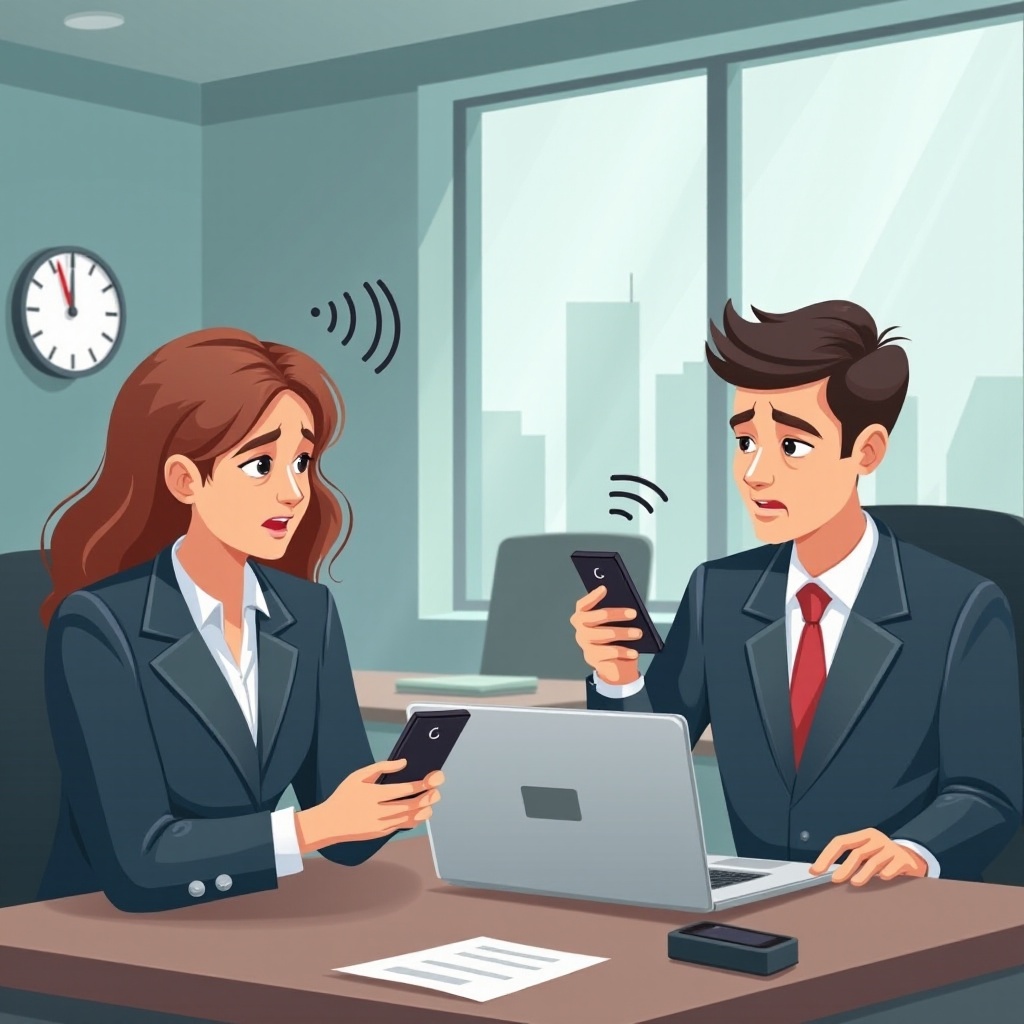Introduction
Cell phone jammers can significantly disrupt personal and business communication. They are used to block cellular signals, interfering with your ability to make calls, send texts, and use the internet. This interruption can be inconvenient at best and dangerous at worst, especially in emergencies. Therefore, it’s crucial to understand how to identify and stop these devices. This comprehensive guide will walk you through everything you need to know about cell phone jammers, including identification, practical solutions, advanced tactics, and preventive measures.

Understanding Cell Phone Jammers
Cell phone jammers are devices designed to block or interfere with mobile signals. They work by emitting radio frequencies that disrupt the connection between your phone and the cell tower. When a jammer is in operation, your phone will fail to establish a line to the network, rendering it useless for calls, messaging, or data services.
These devices typically have a limited range, usually a few meters to several hundred meters. They are often used in environments where controlling communication is deemed necessary, such as in schools, theaters, or even by some individuals seeking privacy.
While the use of cell phone jammers might be understandable in certain contexts, they pose significant risks and may be illegal in many jurisdictions. Knowing how to identify and counteract their effects is essential.
Identifying Cell Phone Jammer Presence
Before you can stop a cell phone jammer, you need to know if one is being used nearby. Here are some common indicators:
-
Sudden Signal Loss: If you notice a sudden drop to no signal in a location where you previously had good reception, a jammer might be the cause.
-
Interference with Devices: Nearby electronic devices, such as Wi-Fi routers or Bluetooth devices, may start to malfunction or experience interruptions.
-
Pattern Recognition: Consistently losing signal in specific areas or at certain times could indicate the presence of a jammer.
Recognizing these signs can help you confirm whether a jammer is active and allow you to take appropriate action.

Practical Solutions to Stop Cell Phone Jammers
Once you’ve identified the presence of a cell phone jammer, here are some practical solutions to help you reclaim your signal:
Relocating to Jammer-Free Zones
The simplest way to counteract a jammer is to move out of its range.
– Distance Matters: Jammers have limited ranges, so moving a few meters away can sometimes restore your signal.
– Identify Safe Spots: Knowing the layout of the area can help you find spots where signals are not being blocked.
Using Radio Frequency (RF) Detectors
RF detectors can help you locate the source of the jamming signal.
– Device Capabilities: These detectors can identify the frequencies being disrupted and help pinpoint the jammer’s location.
– Actionable Insights: Once you know the jammer’s location, you can take steps to move beyond its effective range or report it to authorities.
Deploying Signal Booster Technology
Signal boosters can amplify your cell phone’s signal to overcome interference.
– Enhanced Reception: These devices capture weak signals and amplify them, making it harder for jammers to be effective.
– Installation Tips: Place the signal booster in areas where signal reception is typically strong to maximize effectiveness.

Advanced Tactics to Bypass Jammers
In situations where practical solutions aren’t sufficient, advanced tactics can be employed:
Utilizing Alternative Communication Networks
Switching to different communication methods can help bypass jammers.
– Wi-Fi Services: Use Wi-Fi calling and messaging services that operate on different frequencies less likely to be affected.
– Satellite Phones: For critical operations, satellite phones can be used as they rely on a system outside regular terrestrial networks.
Frequency Hopping Techniques
Implementing frequency hopping can help evade jammers.
– Dynamic Frequencies: This technique involves changing the frequency of operation rapidly, making it difficult for the jammer to disrupt the signal.
– Specialized Software: Some advanced mobile devices and communication systems come with built-in frequency hopping capabilities.
Preventive Measures
Taking steps to prevent jamming from affecting you in the first place is the best long-term strategy.
Public Awareness and Reporting Channels
Raising awareness and reporting use of jammers can deter their misuse.
– Educational Campaigns: Informing the public about the legalities and risks associated with jammers can reduce their use.
– Anonymous Reporting: Providing channels for people to report suspected jammers helps in monitoring and enforcement.
Legal Avenues and Contacting Authorities
Consult with legal avenues and engage authorities to address jamming issues.
– Legal Consultation: Seek legal advice to understand your rights and possible actions if you detect a jammer.
– Police Involvement: Contact local authorities to report and investigate jamming activities, as they are often illegal and can be prosecuted.
Conclusion
Cell phone jammers present significant challenges to communication, but understanding how they work and identifying their presence can mitigate their impact. Practical solutions and advanced tactics are available to help regain and maintain connectivity. Additionally, raising public awareness and engaging with legal avenues can deter and address the misuse of these devices.
By arming yourself with this knowledge, you can ensure reliable communication and protect yourself from the disruptions caused by cell phone jammers.
Frequently Asked Questions
How can I tell if a cell phone jammer is being used nearby?
Look for signs like sudden signal loss, interference with other devices, and consistent signal issues in specific areas.
Are there any legal consequences for using a cell phone jammer?
Yes, using a cell phone jammer is illegal in many jurisdictions and can result in fines, confiscation of the device, and legal action.
What should I do if I detect a jammer?
Move to another area, use an RF detector to locate the jammer, deploy a signal booster, and report the issue to local authorities.